
10 Iron-Rich Foods That Should Be In Your Diet
Iron is a mineral with various critical activities, the most important of which is to transport oxygen throughout the body as part of red blood cells.
It's an important nutrient, which means you can't obtain it through supplements. This nutrient's Daily Value (DV) is 18 mg. Surprisingly, the amount of iron your body absorbs is heavily influenced by how much you've stored. If your intake is insufficient to replace the quantity you lose each day, you may develop a deficit.
Anemia, or a lack of iron, can induce fatigue and other symptoms. Menstruating women who don't eat iron-rich meals are especially vulnerable to iron deficiency. Fortunately, there are several appropriate food options to help you achieve your daily iron requirements.
Here are ten iron-rich foods to add to your diet.
1. Shellfish
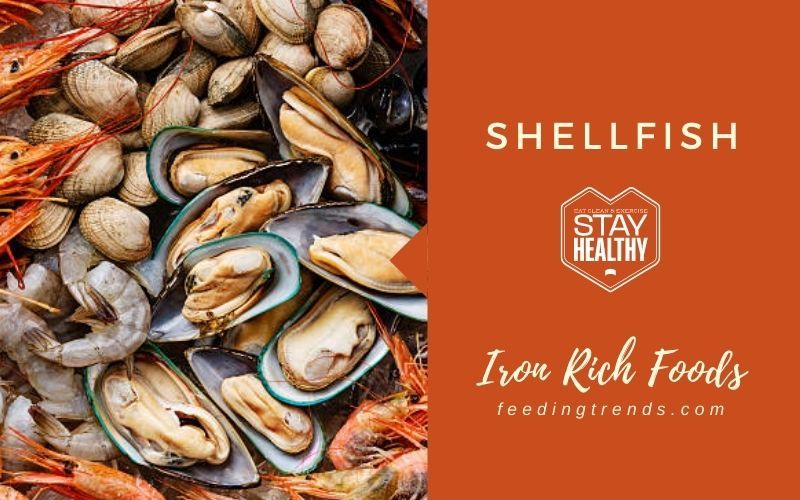
Shellfish is both delicious and healthful. Iron is abundant in all shellfish, but it is especially prevalent in clams, oysters, and mussels. For example, a 3.5-ounce (100-gram) lunch of clams may provide up to 3 milligrams of iron, which is 17% of the daily intake. The iron concentration in clams, on the other hand, varies tremendously, and certain kinds may have significantly lower levels.
Shellfish, in fact, is high in minerals and has been shown to raise the level of heart-healthy HDL cholesterol in your blood. Despite valid worries about mercury and toxins in some fish and shellfish, the benefits of eating seafood much outweigh the risks.
2. Spinach
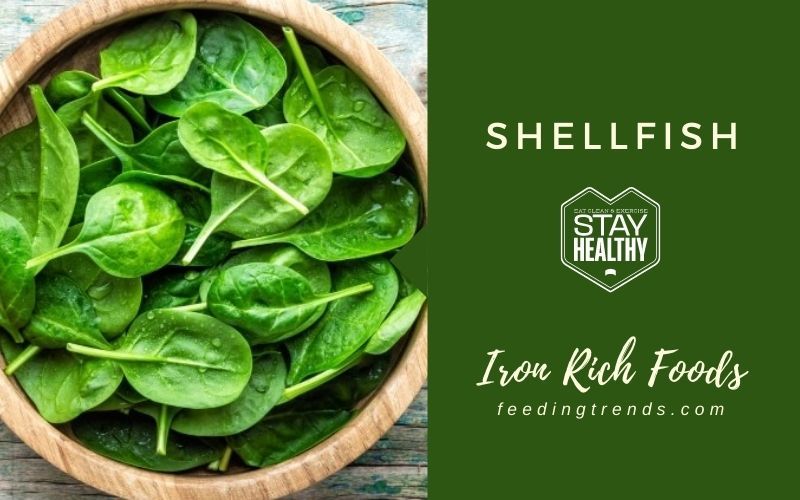
Spinach has a lot of health benefits yet is low in calories. Raw spinach contains 2.7 milligrams of iron (about 15% of the daily value) in around 3.5 ounces (100 grams). Although spinach contains non-heme iron, which is poorly absorbed, it is also high in vitamin C. This is significant because vitamin C improves iron absorption. Spinach is also high in carotenoids, which are antioxidants that may lower your cancer risk, reduce inflammation, and protect your eyes from disease.
3. Meats from the liver and other organs
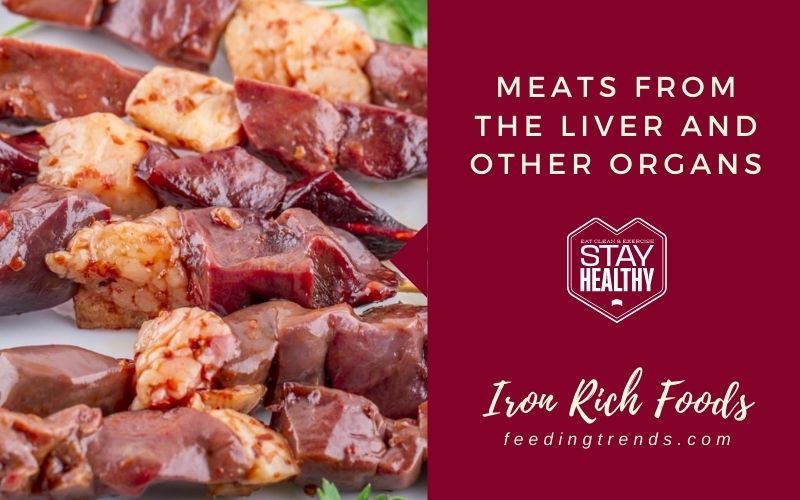
Organ meats are high in nutrients. Iron-rich organs such as the liver, kidneys, brain, and heart are popular. A 3.5-ounce (100-gram) serving of beef liver, for example, contains 6.5 milligrams of iron, or 36 percent of the daily value. Organ meats are also high in protein and include B vitamins, copper, and selenium, among other nutrients. The liver is very high in vitamin A, delivering 1,049 percent of the daily value (DV) per 3.5-ounce dose.
4. Vegetables

Legumes are nutrient-dense foods. Beans, lentils, chickpeas, peas, and soybeans are some of the most prevalent legumes. They're especially good for vegetarians because they're high in iron. Cooked lentils have 6.6 mg per cup (198 grams), which is 37% of the daily value. Beans such as black beans, navy beans, and kidney beans are all good sources of iron.
5. Red Meat

Red meat is both filling and healthy. Protein, zinc, selenium, and numerous B vitamins are all abundant in meat. Iron deficiency may be less common in persons who eat meat, poultry, and fish on a daily basis, according to research.
6. Pumpkin Seeds
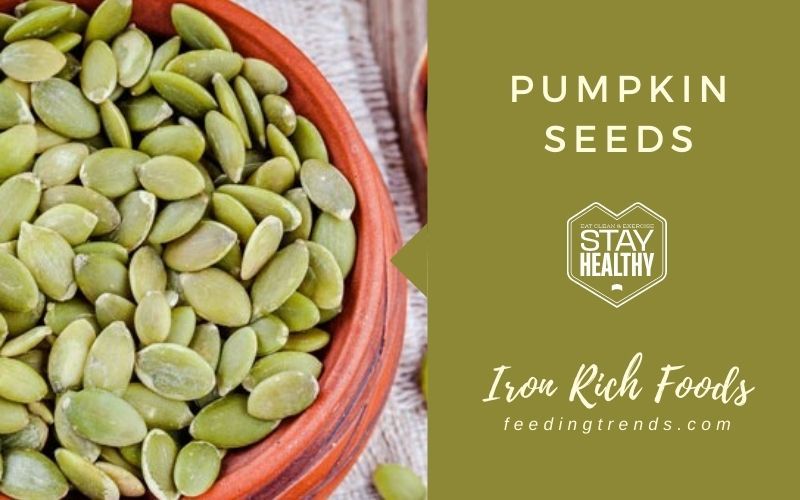
Pumpkin seeds are a tasty and practical snack.2.5 milligrams of iron is found in a 1-ounce (28-gram) serving of pumpkin seeds, which is 14 percent of the daily value. Pumpkin seeds also include a lot of vitamin K, zinc, and manganese. They're also high in magnesium, which many people don't get enough of. Magnesium, which helps reduce your risk of insulin resistance, diabetes, and depression, is found in a 1-ounce (28-gram) dosage.
7. Quinoa
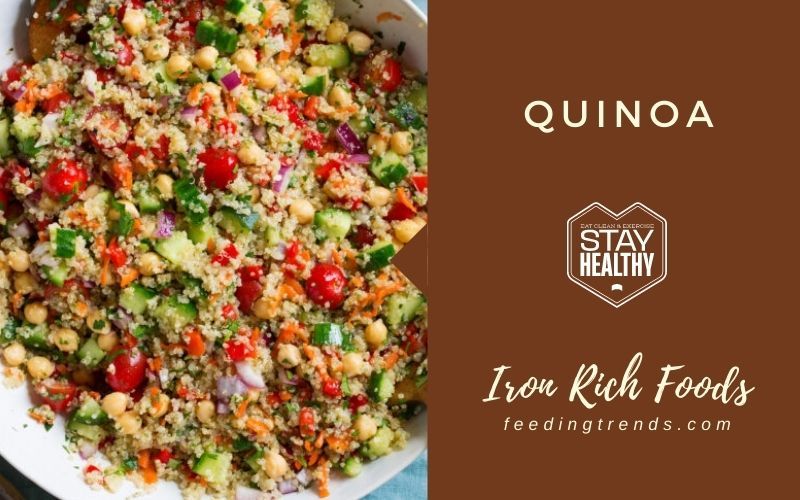
Quinoa is a pseudocereal and a popular grain. Cooked quinoa has 2.8 milligrams of iron per cup (185 grams), which is 16 percent of the daily requirement. Quinoa is also gluten-free, making it a suitable option for people who have celiac disease or other forms of gluten intolerance. Quinoa is high in folate, magnesium, copper, manganese, and a number of other minerals, and has a higher protein level than many other bowls of cereal.
8. Broccoli
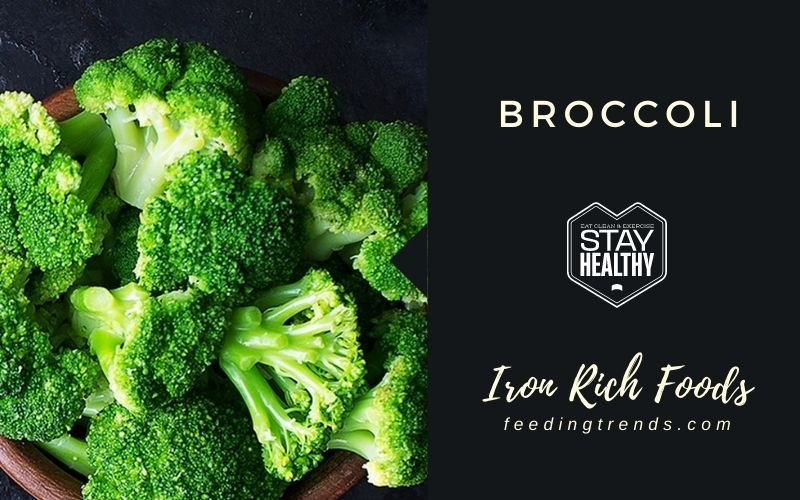
Broccoli is a nutrient-dense vegetable. 1 mg of iron is found in a 1-cup (156-gram) portion of cooked broccoli, which is 6% of the daily value. Furthermore, a serving of broccoli contains 112 percent of the daily value for vitamin C, which aids in iron absorption. The same serving size also contains a lot of folates, 5 grams of fiber, and some vitamin K. Broccoli, like cauliflower, Brussels sprouts, kale, and cabbage, belongs to the cruciferous vegetable family.
Indole, sulforaphane, and glucosinolates are plant chemicals that are thought to protect against cancer and are found in cruciferous vegetables.
9. Dark Chocolate
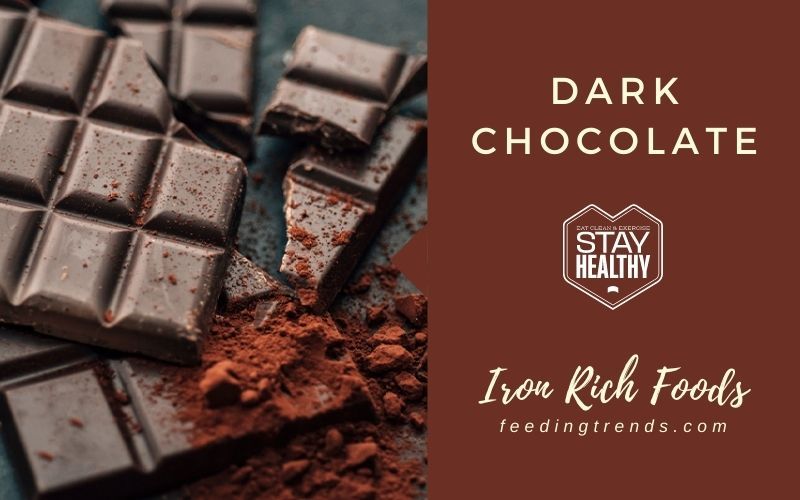
Dark chocolate is both tasty and good for you. A 1-ounce (28-gram) meal includes 3.4 milligrams of iron or 19% of the daily value. This little serving also contains 56 percent of the daily value for copper and 15 percent of the daily value for magnesium, respectively. It also contains prebiotic fiber, which helps to feed the good bacteria in your gut.
According to a study, cocoa powder and dark chocolate have more antioxidant activity than acai berry and blueberry powders and drinks.
Chocolate has also been demonstrated to have cholesterol-lowering properties, potentially lowering your risk of heart attacks and strokes.
10. Fish
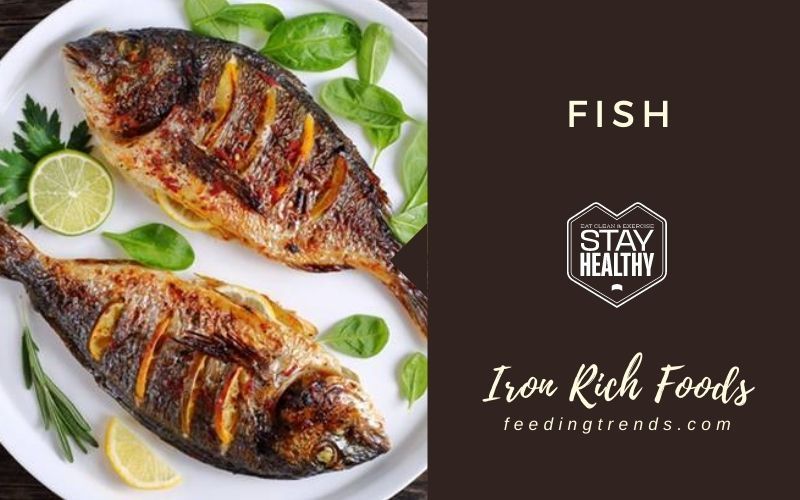
Fish is a nutrient-dense food, and some varieties, such as tuna, are particularly high in iron. In fact, a 3-ounce (85-gram) portion of canned tuna has roughly 1.4 milligrams of iron or about 8% of the daily value.
Fish is also high in omega-3 fatty acids, a type of heart-healthy lipid that has been linked to a variety of health advantages. Omega-3 fatty acids, in particular, have been demonstrated to improve brain health, immunological function, and support healthy growth and development.
Read more:
Appreciate the creator